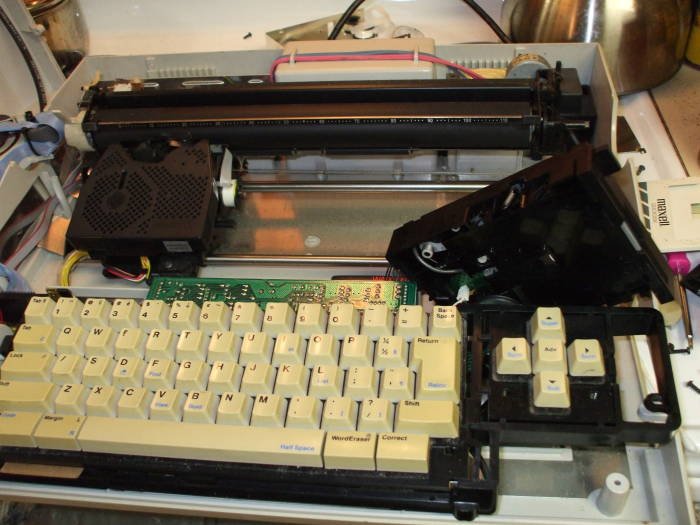

*3 - In fact it was a competition of many designs: IBM's 4", Sony's 3.5", Matushita's 3", Mitsumis 2.8", Sharp's 2.5" and Fujitsu's 2".
#MITSUMI QUICK DISK NINTENDO FULL#
Later developments cut the height as well in half, resulting in 1/4th volume of a slim line 5.25 compared with a full height 8 inch *2 - drive height was kept the same thus half volume. *1 - It's sufficient close to square root of 2 (1.41) So, no, going way below 5" by keeping the 8" technology wasn't a serious option. For Nintendo's Famicom-Disk they created a redesigned version borrowing the centering mechanism (in plastic) as well as a hard case, making it match the setup of a 3.5" drive - sans the slider, keeping the need for sleeves. Beside having meager capacity of 64 KiB per side, they were extremely unreliable. This isn't anything theoretical, as Mitsumi tried exactly this with their 2.8" variation.

For example due thinner materials the medium gets more sensitive to damage - and more so, a smaller hole in the middle reduces reliability for centering while increasing stress on the material (due a reduced lever) at the same time. Beside all the technical reasons regarding recording (like density), it's much about mechanical reliability.

Some comments ( for example jcarons) asked why not going smaller, like 3.5, but keeping technology the same. (Beside, a 3.5 inch drive in an 8 inch bay would just look ridiculous :)) The following Tock was then again a step of design changes (*3). A shrink of an existing design just in scale, not design or function. It's a bit like the Tick part of the often cited Tick-Tock strategy Intel follows for CPUs. To produce 3.5" ones, new steps, different materials and different handling had to be developed - quite a large investment, especially compared to retooling. So just new tools to be installed on existing machinery. For example to manufacture the floppies only the punch to cut out the magnetic foil with its corresponding holes (same for sleeves) and folding brackets closing a disk sleeve and so on had to be made.

All without any basic change, just relative minor adaptations. The only difference was in size, a linear shrink with a factor of about 1.5 (*1), which means the needed surface and thus size shrunk in half (*2). Each and every step of Manufacturing of floppies.The move to 5.25 inch didn't change any technology involved. Hy not make the drives even cheaper by jumping straight to an even smaller form factor such as the 3.5" that was eventually settled on?īecause that needed a new technology. Was it for one of those three reasons, or something else? With late seventies technology, 5.25" was the optimum balance between the cost of a larger mechanism and the cost of a smaller one.Īs it turns out, smaller was indeed cheaper, but that would've been too much of a leap into the unknown at the time, for an industry that as yet had no experience with disks smaller than eight inches. On the contrary, beyond a certain point, miniaturization becomes difficult and adds cost. Reduced size means reduced capacity! 5.25" was a trade-off between the desire to make the drives smaller which would indeed reduce cost, and the desire to preserve capacity. Given that, why not make the drives even cheaper by jumping straight to an even smaller form factor such as the 3.5" that was eventually settled on? Answers and comments to Why were 5.25" floppy drives cheaper than 8"? suggest some reasons why floppy disks moved from 8" to 5.25" basically it seems the smaller size reduced engineering difficulty and thus cost in a number of ways.


 0 kommentar(er)
0 kommentar(er)
